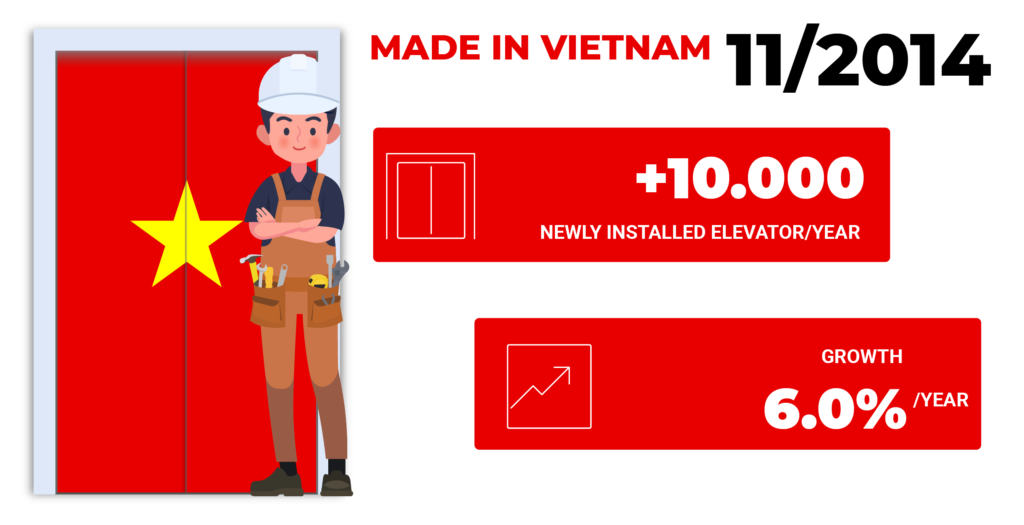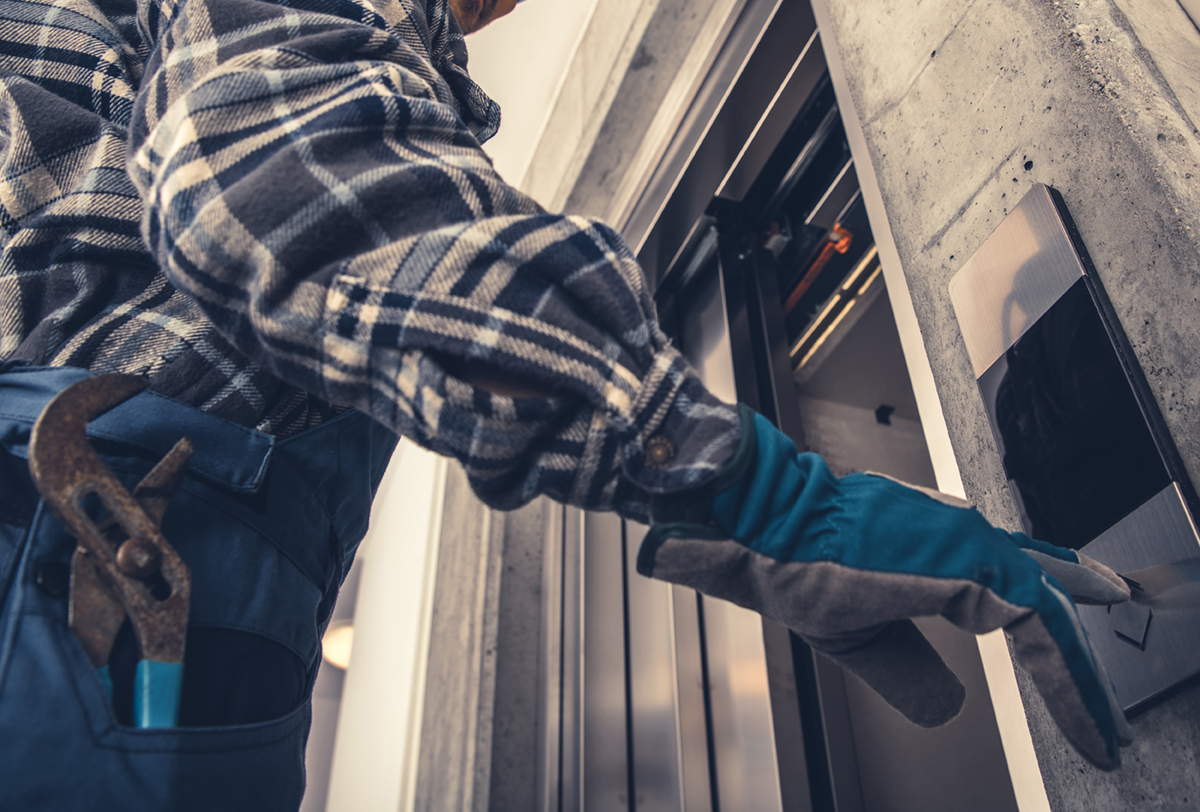With 10,000 elevators installed each year, the Vietnamese market has shown that the potential for this product is huge. The elevator industry has a lot of potential and momentum for development. But the question is how must the workforce be trained to meet the development of the elevator industry in the coming time?
Vast space
ASEAN is a dynamic market for the elevator industry. According to the latest United Nations figures, the population of 11 Southeast Asian countries is more than 681,300,000 (Updated to June 2022), accounting for 8.57% of the world’s population. The relatively even and stable economic development of the countries in the bloc has created an optimistic picture for the real estate industry. The rise of high-rise buildings is increasing, directly stimulating the hot development of the elevator industry, both in terms of production and consumption.
Statistics show that, from the beginning of the 21st century until now, the demand for elevators has increased by an average of 5.9% per year. In 2020, the total value of elevator products newly manufactured and put into use worldwide will reach 128 billion USD (about 3 million billion VND). It is predicted that by 2027, the scale of the world elevator market will be constantly expanding with more than 1 million new products/year, bringing the number of elevators used in the world to 24 million units and bringing more huge revenue source for companies operating in the field of manufacturing, fabrication, installation and maintenance services.
Vietnam is considered as the fastest growing economy in Southeast Asia, which is in the process of rapid urbanization. The demand for installing elevators and escalators has also increased since then, making our country a potential market. After initially acting as only production factories for brands from East Asia or Europe, in the past decade, domestic elevator manufacturing enterprises have begun to emerge, occupying the market. own segment and constantly growing.

An optimistic picture of the potential of Vietnam’s elevator market
In November 2014, Vietnam officially announced the inclusion of elevator products in the list of products that can be produced domestically. After more than 7 years since this time, the elevator field has made many impressive developments. Production capacity and service provision have been gradually improved according to experts in the region. Every year, we install new ladders with a quantity of about 10,000 units. This figure shows that Vietnam is an attractive land in the field of elevators.
Significant challenges
According to statistics, currently in Vietnam, there are more than 300 companies operating in the field of elevators, including foreign enterprises (mostly doing trade) and domestic enterprises (importing complete elevators; automatic production and assembly). Foreign enterprises have many advantages in terms of capital, marketing strategies, management skills and sustainability goals. Imported elevator products distributed by them have a number of advantages such as strictly controlled quality, strong brand name, diversified models, modern advanced technology, high uniformity, etc., so they are often favored. selected for large and key projects. Meanwhile, domestic elevator enterprises are often limited in terms of capital (even accessing preferential capital is difficult), production is fragmented, chasing short-term profits and supporting industries. very weak. This leads to domestic enterprises still struggling with the problem of localization to reduce product costs, running after price competition. Internal elevator products are not diverse, have not created trust for consumers because of doubts about quality…
Most of the elevator products manufactured in our country are not appreciated for their quality. Human resources in the industry do not have a training standard, but everyone is working at businesses. Customers’ trust in Vietnamese elevators is still at a… modest threshold. If these are not improved, the community of elevators and ancillary businesses for the elevator industry will still be fragmented, lacking in connectivity, creating the risk of inhibiting the development of the elevator industry and possibly causing problems. We lost at home.
To solve the challenges and open up opportunities for the Vietnamese elevator industry, what do we need to do?
Solve key problems
The first is the construction of non-tariff barriers, protecting domestically produced products as well as protecting domestic consumers. It creates conditions for domestic production not to be outdone by foreign products.
Second, it is necessary to have policies for the supporting industry of the elevator industry, which is considered the backbone of the industry. This will make an important contribution to increasing the localization rate and enhancing the added value of domestically manufactured elevator products.
Third, strengthen international cooperation to transfer scientific and technical advances, and at the same time connect domestic production with global supply chains.
Fourth, transparent policies are needed so that domestic production is truly linked with public procurement. During the past time, domestic elevator products are having to stay out of the game for many reasons, both subjective and objective, at a disadvantage for domestic elevator products.

Along with capital and technology, human resources will contribute to forming a tripod for the development of the elevator industry.
To solve these four basic problems, we must first create a “base” by Standardizing Products and Standardizing People. From there, towards the goal of building a national brand, manufacturing quality elevators not only meets the domestic market but also exports.
The seminar “Improving the quality of human resources in Vietnam’s elevator industry” will be held for the first time on the morning of July 13, in Hanoi. This will be an opportunity for state management agencies, the business community, training institutions, and representatives of workers’ organizations to discuss the urgency of improving the quality of human resources for the elevator industry. On that basis, it is proposed to develop a set of National Occupational Skills Standards for the elevator industry, as a premise to standardize training programs in the vocational education system, etc. The workshop will take place on the morning of July 13. 2022 at Level 6 – Lotte Hotel Hanoi, No. 54 Lieu Giai (Ba Dinh, Hanoi). GamaLift is the Diamond Sponsor, Gama Service is the Gold Sponsor and Thien Nam is the Companion sponsor. For any information, please contact: Ms. Nguyen Tu Linh – Secretary of the Association: 0979.035.467 – contact@vnea.com.vn



